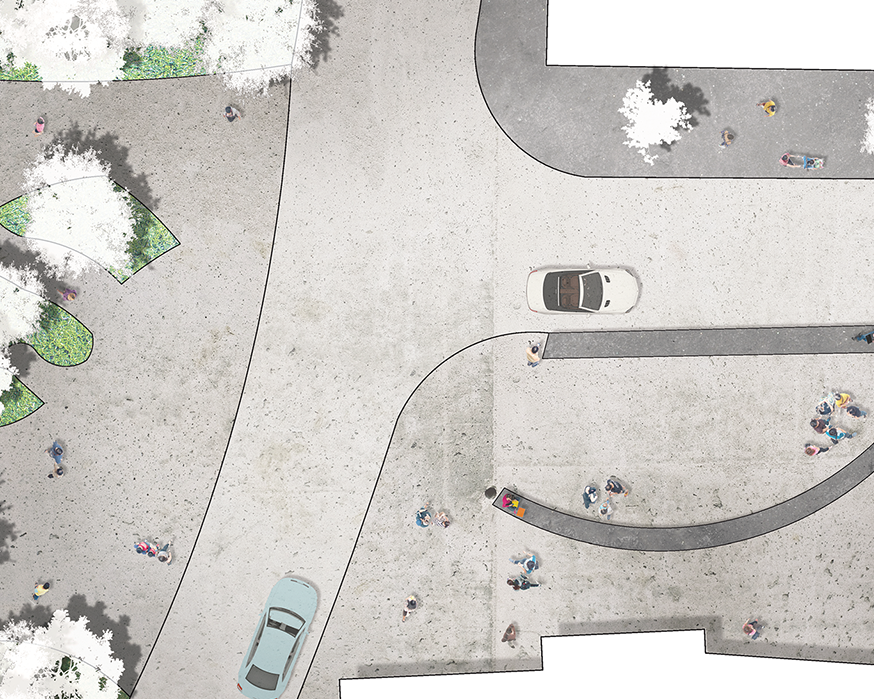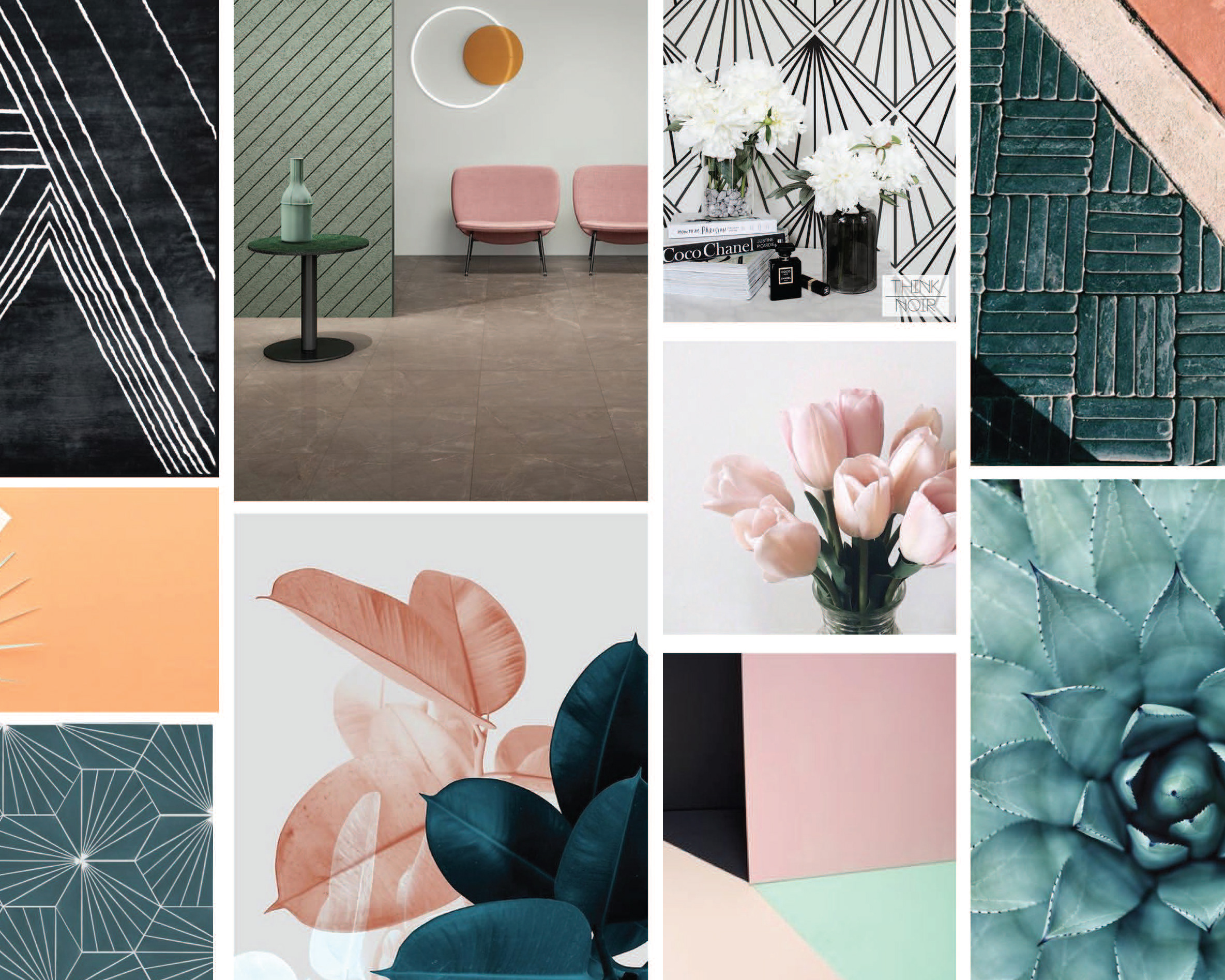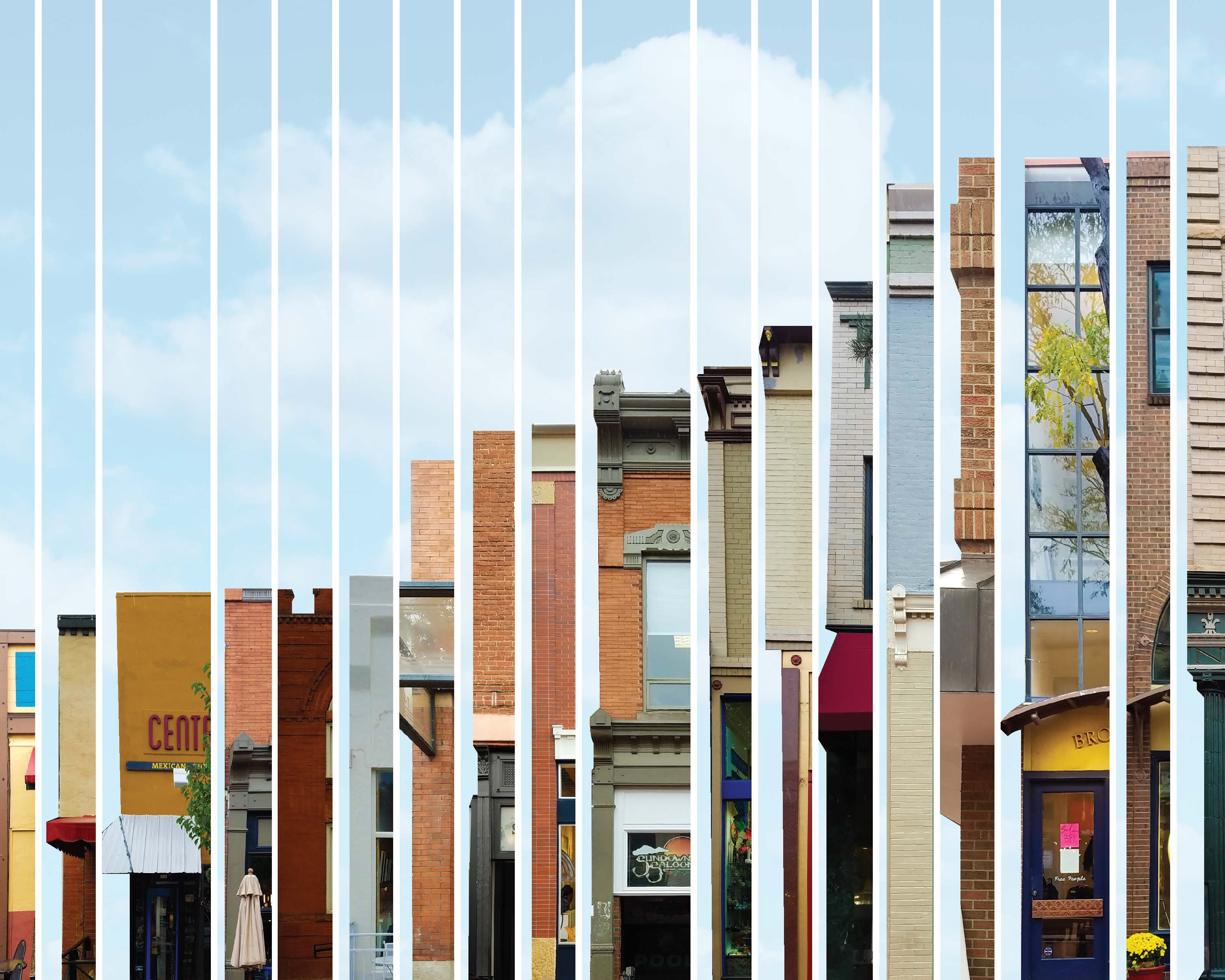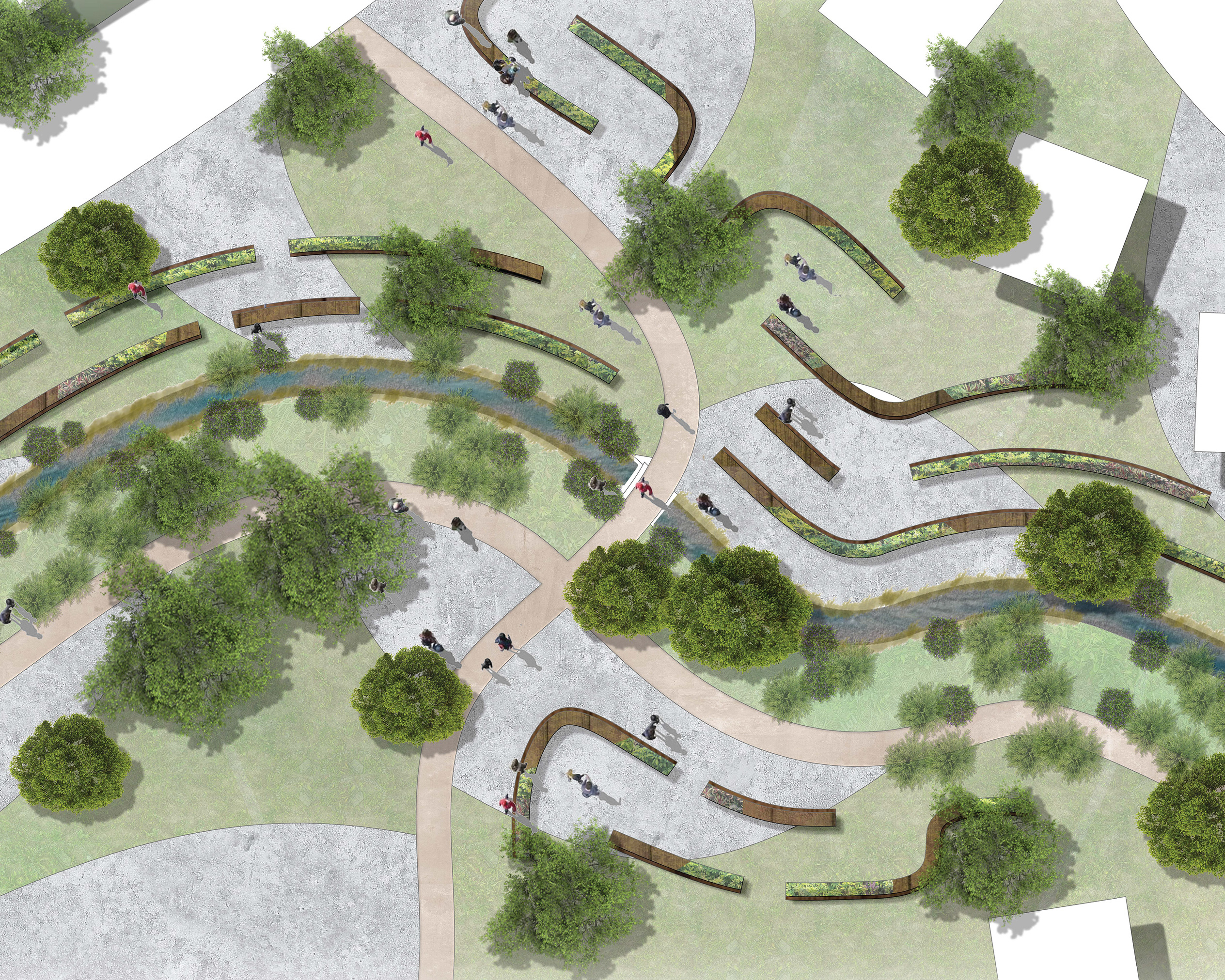Jennie Coleman - CU Environmental Design Student - Spring 2018 Project Model
Alexandra has taught the studio otherwise known as Design and Communication II, Envd 1102, three times over the past two years. She originally taught Envd 1102 in the Spring of 2018 under the coordination of Betsy Johnson. During the summer of 2018, Alexandra taught 1102 again and assisted in the new course assignment creation with Emily Greenwood and Jeremy Ehly. Currently, she is teaching the revised 4-credit studio this Spring of 2019 under the coordination of Betsy Johnson.
About the Course
This course built on concepts explored and skills developed in ENVD 1052, the first design studio in Design Communication, introducing students to the fundamentals of design and design communication through a process of observation, analysis and synthesis. Students developed an understanding of compositional strategies, ordering systems, design thinking, and lastly research related to both a context and specific user groups. Students were introduced to a range of visual representation techniques necessary for the investigation, development, and communication of their ideas through a series of three projects.
A sampling of some assignments and student work is shown below. All projects and assignments range over the course of three different semesters teaching the same course, Envd 1102 Design and Communication II.
James Bareiss - CU Environmental Design Student - Site Plan of the Final Bridge Project - Spring 2018
James Bareiss - CU Environmental Design Student - Elevation of the Final Bridge Project - Spring 2018

James Bareiss - CU Envd Student - Spring 2018 Model
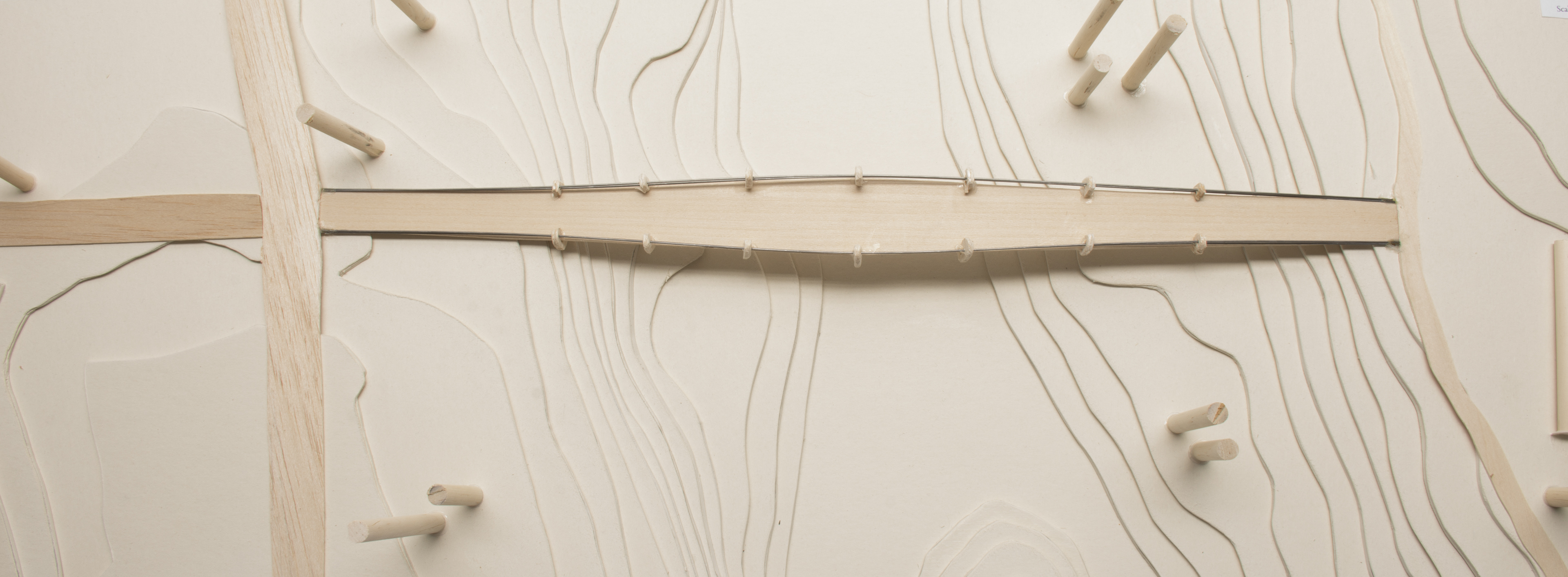
James Bareiss - CU Envd Student - Spring 2018 Model

James Bareiss - CU Envd Student - Spring 2018 Model
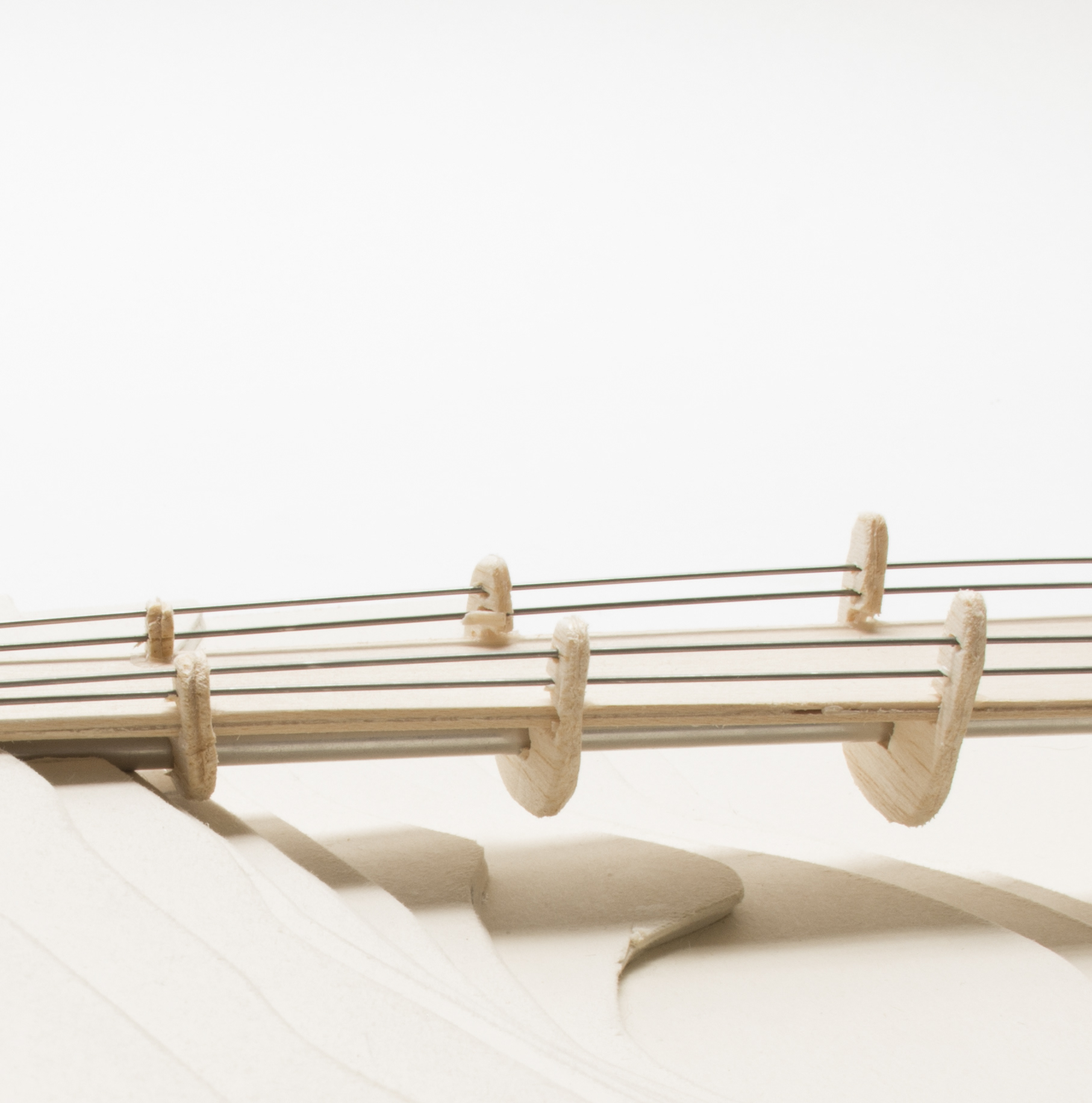
James Bareiss - CU Envd Student - Spring 2018 Model
Design Intervention Final Project (shown above)
The final studio project in the spring of 2018 was to create a bridge located along the Boulder Creek. This project served as the first design project where students conducted site analysis and began to think about how contextual aspects may inform or influence a design. Students were given specifics considerations to take into account, synthesizing all they have learned over the course of the studio.
Josh Maginsky - CU Envd Student - 3D Printed Model
Josh Maginsky - CU Envd Student - 3D Printed Model

Josh Maginsky - Envd Student - 3D Printed Model

Josh Maginsky - Envd Student - 3D Printed Model

Jennie Coleman - CU Envd Student - Spring 2018

Jennie Coleman - CU Envd Student - Spring 2018
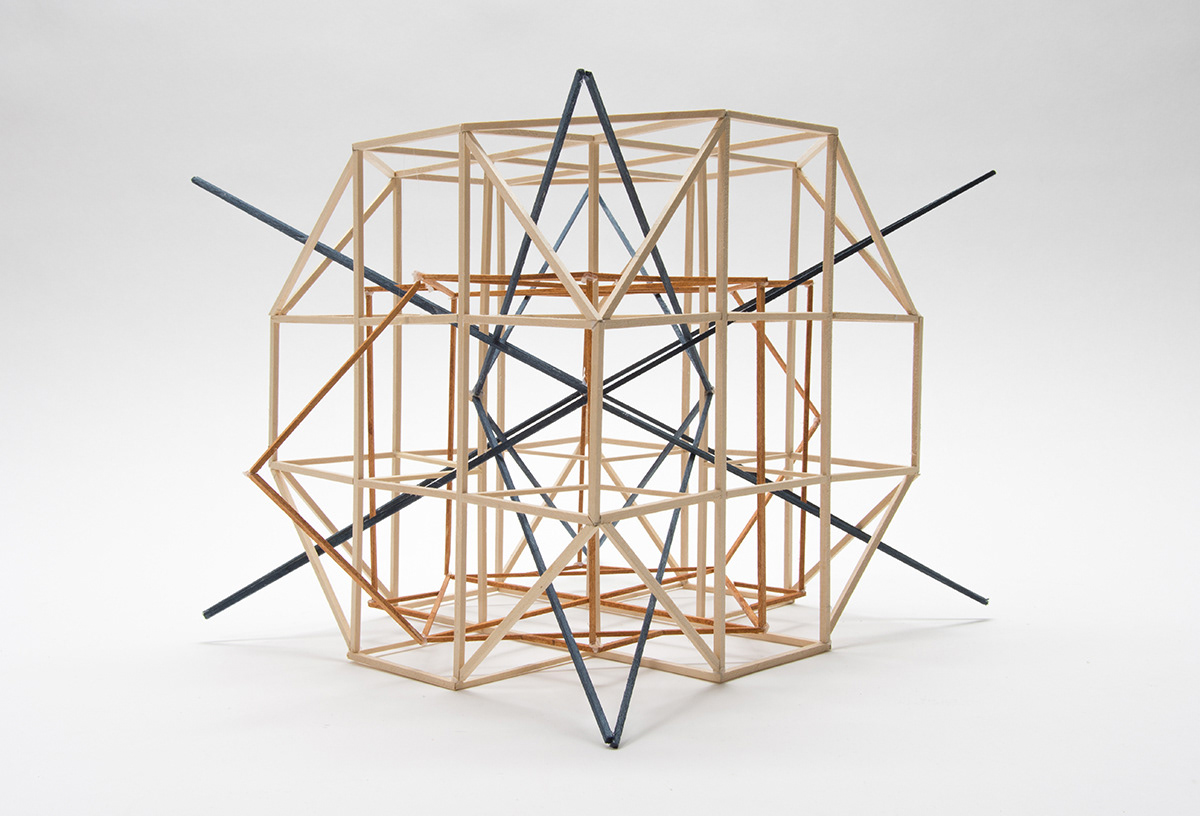
Jennie Coleman - CU Envd Student - Spring 2018
Assemblage Assignment (shown above)
The Assemblage assignment was a short exercise to study an early understanding of hierarchy and organization beyond the 2d plane. Each student was asked to create a series of 2-dimensional grids to represent a hierarchy of lines, only looking at primary, secondary, and tertiary elements before applying that grid to a 3-dimensional model. Students were challenged with organization of space, thinking about solid and void aspects, as well as the overall assemblage.

Maddie Monahan - CU Envd Student - Summer 2018

Maddie Monahan - CU Envd Student - Summer 2018
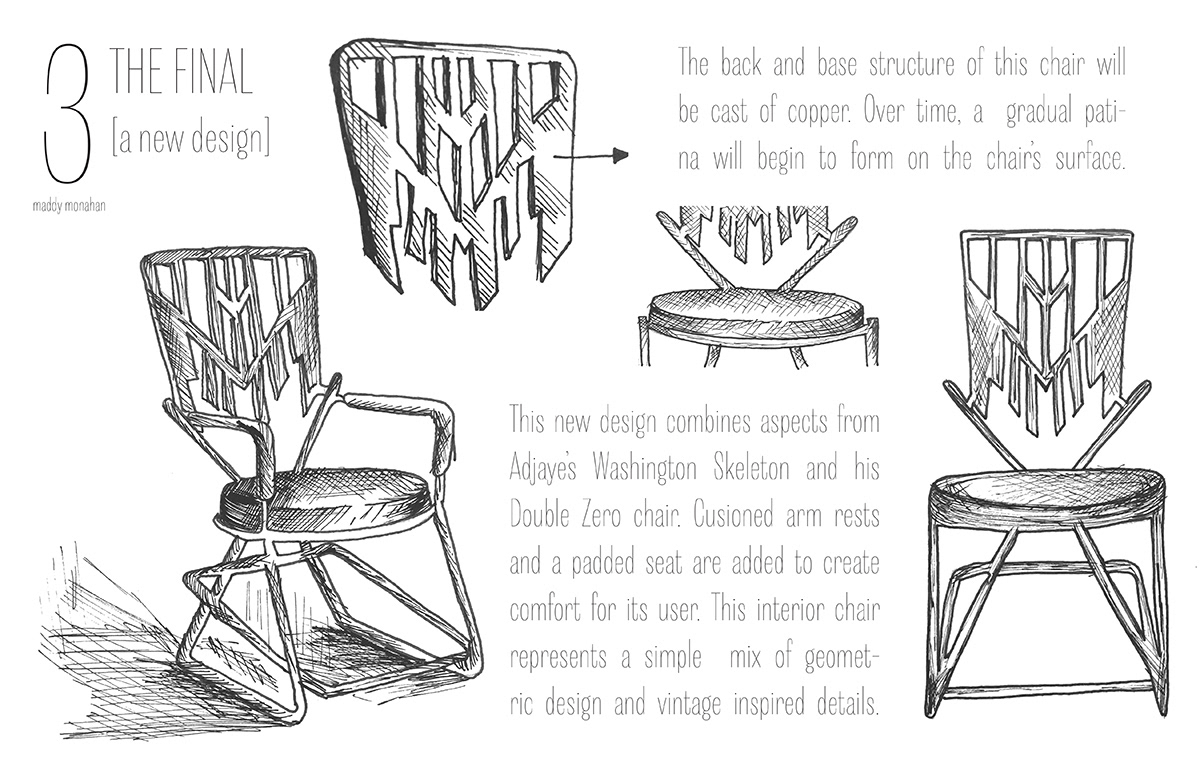
Maddie Monahan - CU Envd Student - Summer 2018

Maddie Monahan - CU Envd Student - Summer 2018
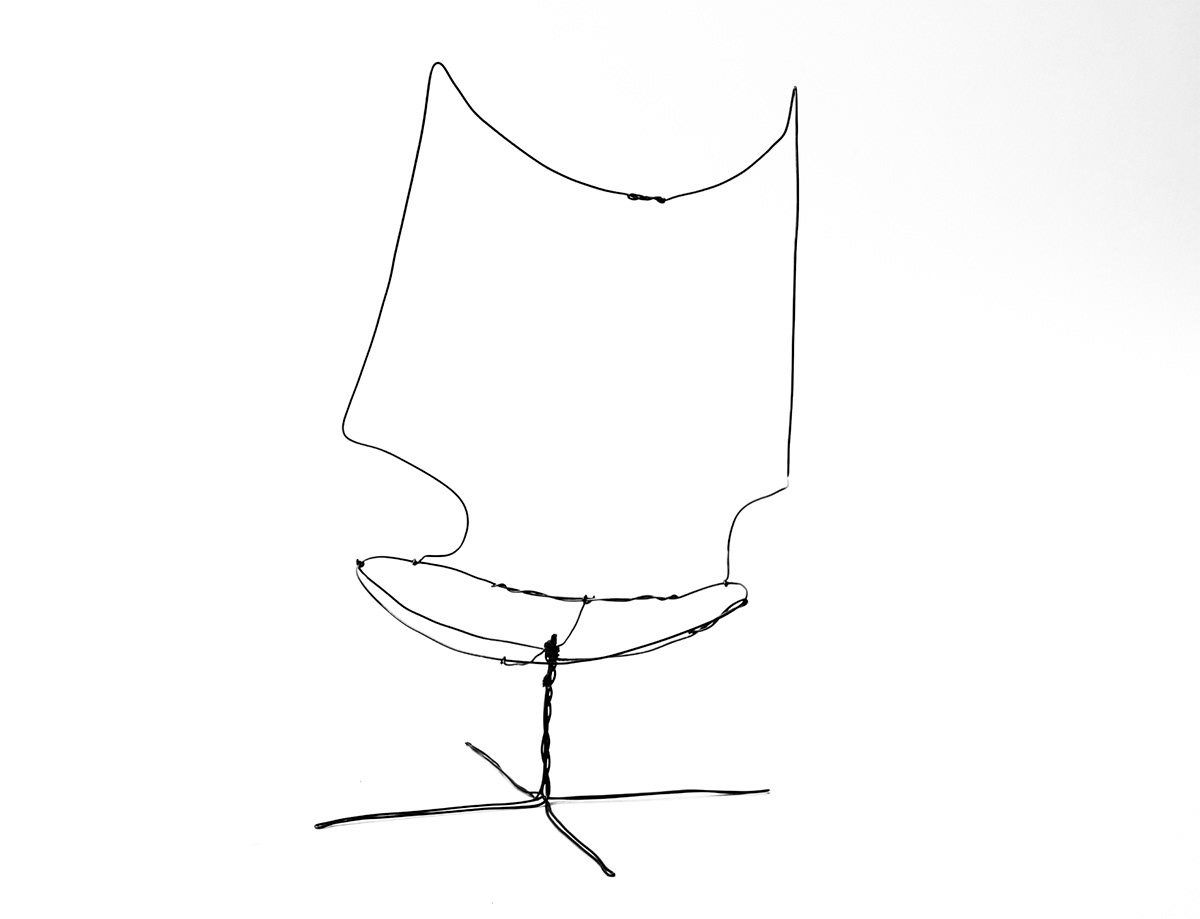
Brandon Pappas - CU Envd Student - Summer 2018

Brandon Pappas - CU Envd Student - Summer 2018
Chair Design Assignment (shown above)
In this assignment, students developed research, documentation, and sketching skills through a focused precedent study of a well-known chair. Each student chose a designer from a curated list and after reviewing the designers body of chair design work, focused on a singular precedent chair. Through investigation and analysis, each student gathered the necessary data to understand the chair designer’s process and final design. Many chair designs were the product of a completely different design problem and should have been recognized for the context in which they were created. Students also explored various studies on the importance of the user, production technologies, and material studies and how each of these factors can impact and inform design.
Molly Obermeier - CU Environmental Design Student - Object Sketch - Spring 2019
Molly Obermeier - CU Environmental Design Student - Human Sketch - Spring 2019
Charcoal Sketch Assignment (shown above)
The charcoal sketch assignment challenged students to think about human proportions while exploring a new medium and developing a loose hand using charcoal and newsprint. Each student drew one human sketch and one object sketch, thinking about shadow and light. This assignment served as a warmup exercise before understanding designing for specific users and beginning to think about the audience.
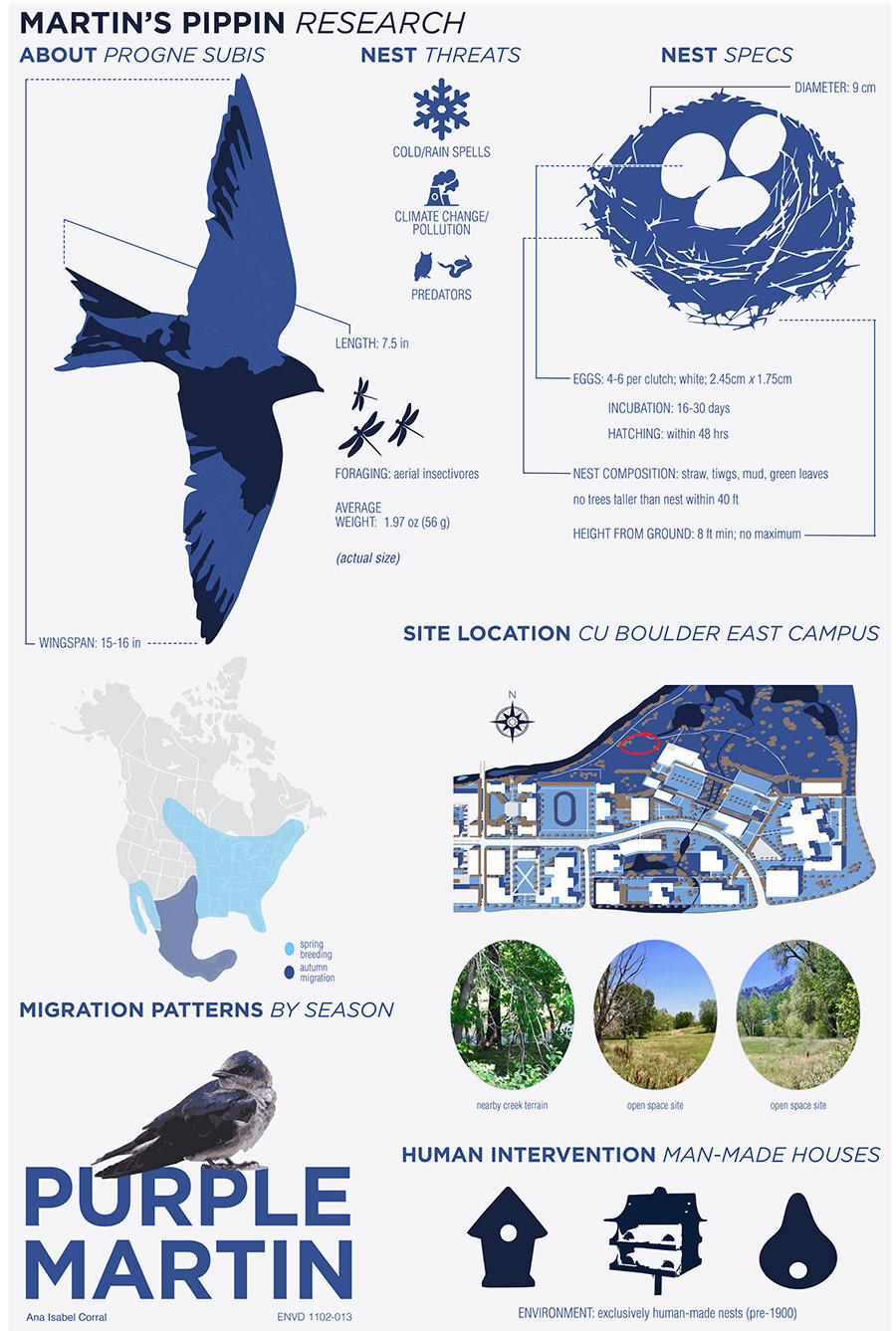
Ana Corral - CU Envd Student - Summer 2018
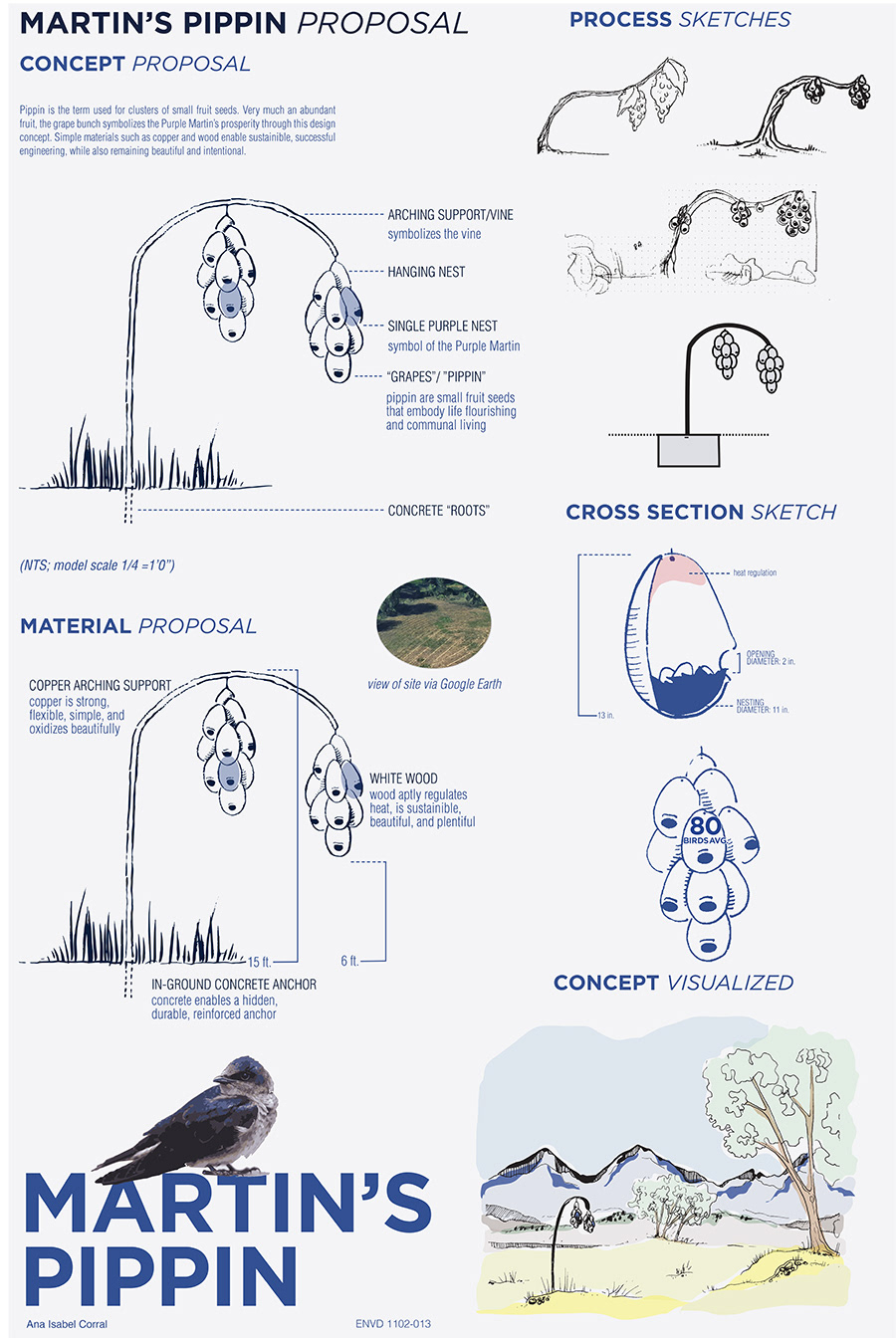
Ana Corral - CU Envd Student - Summer 2018
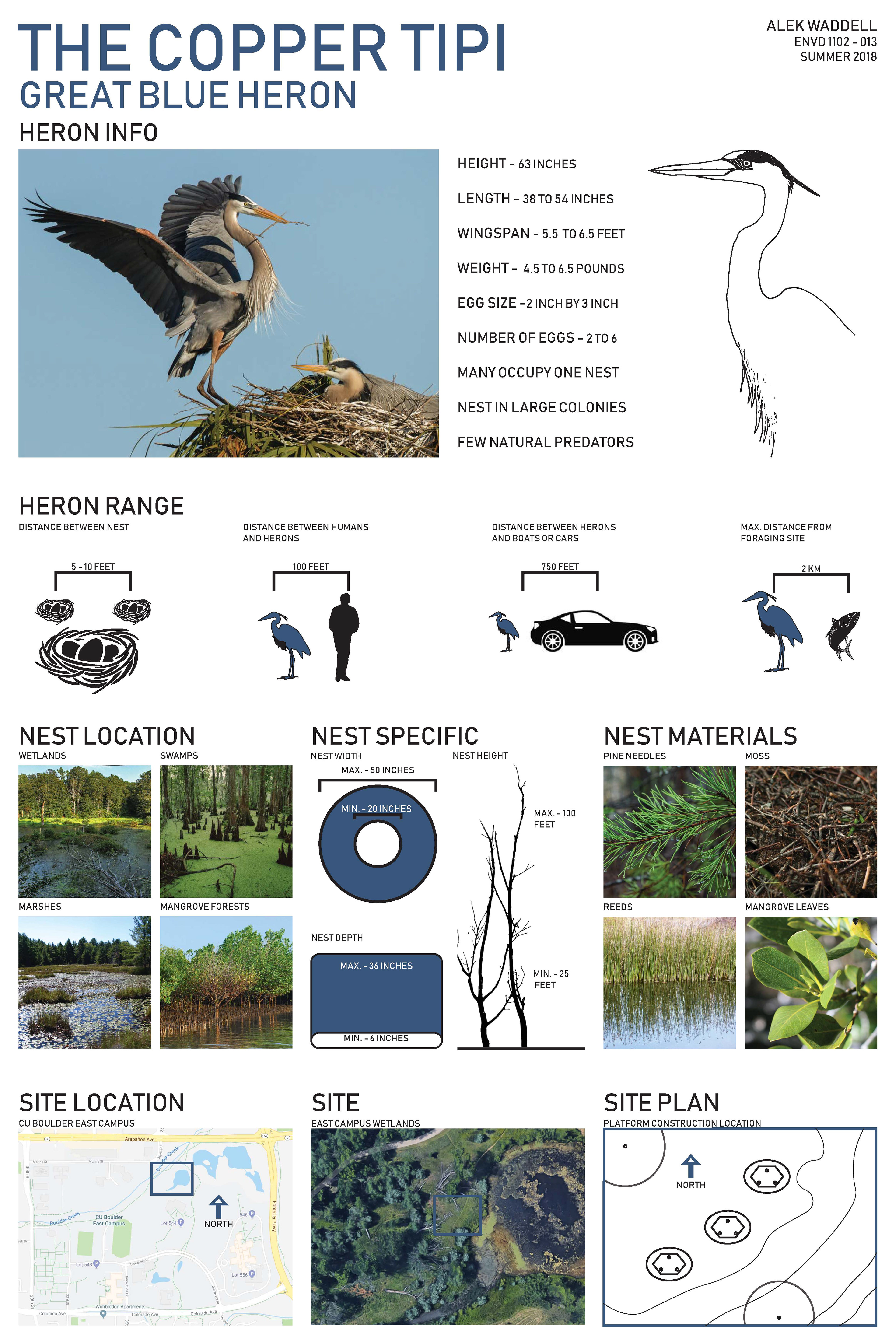
Alek Waddell - CU Envd Student - Summer 2018

Alek Waddell - CU Envd Student - Summer 2018
Bird Nest Design Assignment (shown above)
Each student was asked to select a bird species from a list that is native to Colorado and frequents the Boulder area in order to design a nesting structure specific for the needs of that particular bird species and understand a user. Students researched the requirements for their bird, studying migratory paths in relation to their site, developing several physical prototypes, selecting a specific ecological habitat for their project in East Campus, and then finally developing an innovative nest structure solution for presentation. There are a diverse set of factors that were considered in the design of a nest structure to include: site selection, materiality, function, maintainability (by humans and birds), defensibility (from both predators and competitors), ventilation, attachment method and a host of diverse environmental factors. The final nest design was informed by the research of the bird species, chosen context and a thoughtful overall concept.

